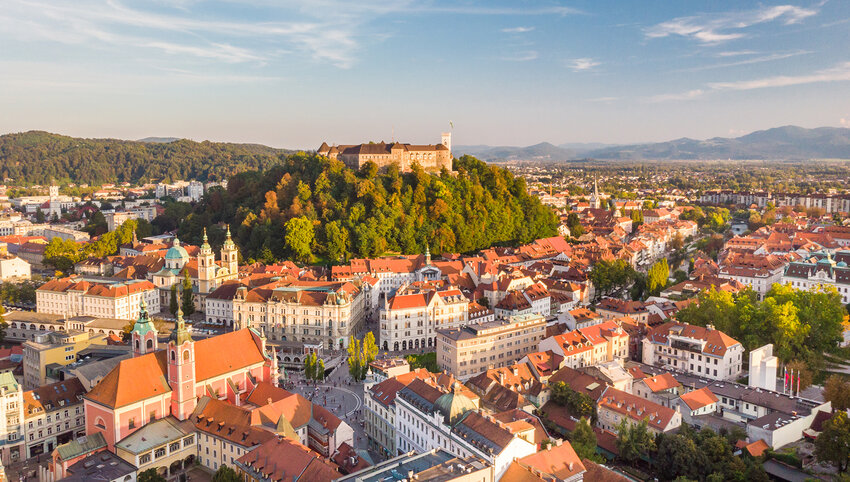Destinations such as Paris and Rome may have the name recognition, but there are plenty of lesser-known European cities that are just as beautiful and historic. These off-the-beaten-track locales may not be as widely famous as places like London, but their scenic cobblestone streets and centuries-old churches make them well worth a trip.
From the wintry Norwegian landscape to the sparkling waters of Slovenia, these urban hidden gems are found throughout every corner of the continent. Here are six cities in Europe that you don’t know but definitely should.
Trondheim, Norway
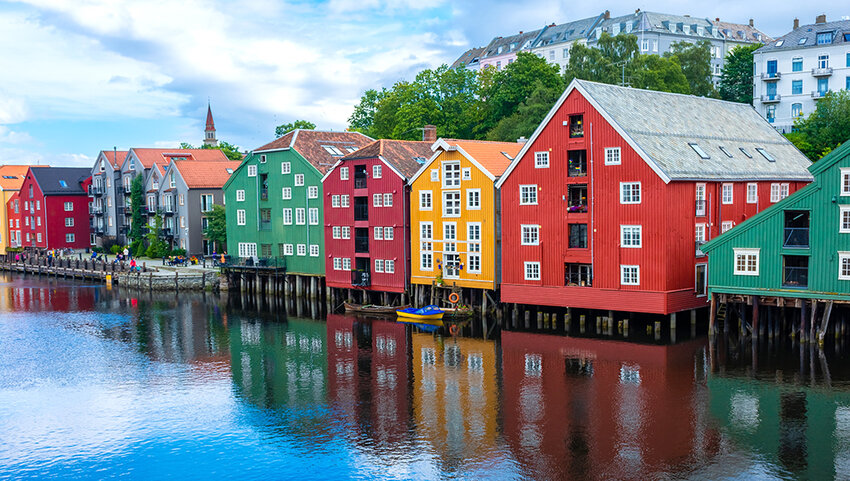
Rated by Condé Nast Traveller as one of the top European food destinations in 2022, Trondheim, Norway, is atop the list of the world’s foremost gastronomic destinations for foodies. With Michelin-starred restaurants serving up decadent, fresh seafood from the adjacent Trondheim Fjord, few culinary experiences are more satisfying than those offered within this Scandinavian paradise. But it’s not just food that makes Norway's third-largest city such a desirable destination.Trondheim is known for its mix of architectural and natural beauty as well.
The Nidaros Cathedral is among Trondheim’s most entrancing landmarks, and is considered to be the world’s northernmost Gothic cathedral. The building was originally completed around 1300 CE, and today serves as a holy pilgrimage site for the tomb of St. Olav — the patron saint of Norway and one-time Viking king. Trondheim also offers countless opportunities to experience nature, from boat tours along the waterways that wind through the city to invigorating ice baths at the Havet Arena. Visitors can even embark upon a “Viking Hike” throughout the nearby mountains to explore cultural sites dating back to the ice age.
Narbonne, France
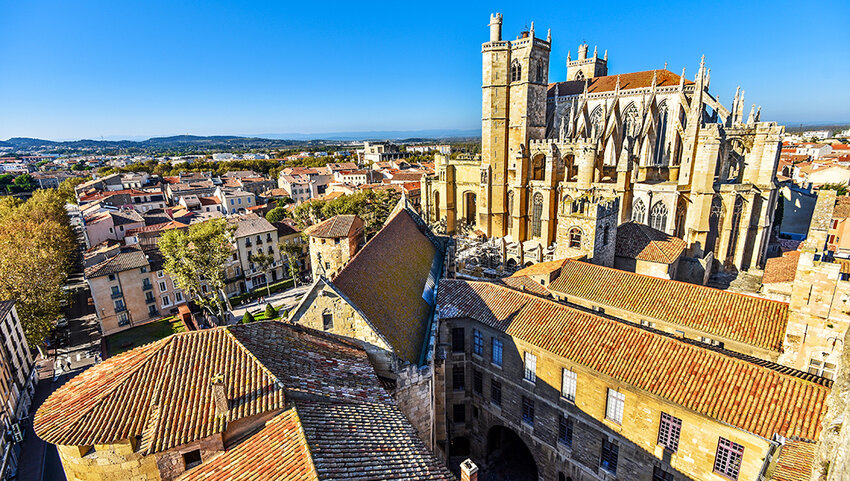
With a population of just over 50,000 residents, the historic Mediterranean port of Narbonne is far from the busy streets of Paris. But for what this city lacks in size it more than makes up for with a rich history dating back to the time of the Roman Empire. Narbonne was first established in 118 BCE by the Romans, and today many antiquities from that period are on display at the Narbo Via museum.
It’s not just Roman-era buildings that make Narbonne so special, as the streets are lined with centuries-old medieval structures such as Fontfroide Abbey and the gothic-style Narbonne Cathedral — a building that remains unfinished, thus adding to its unique aura. Narbonne is also a must-visit destination for oenophiles, as the region’s storied winemaking history puts it on par with other wine regions such as Burgundy and Bordeaux. Visitors can also indulge at Les Halles, a legendary indoor market where local delicacies are served up to hungry customers.
Olomouc, Czech Republic
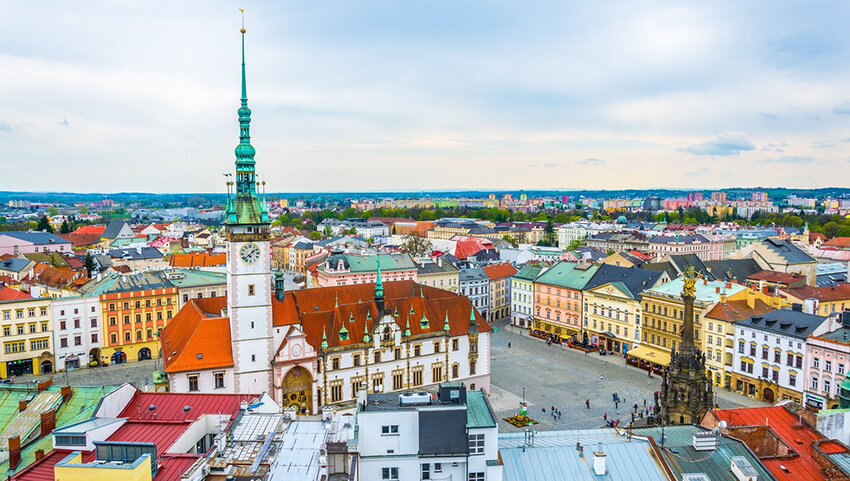
Located in the eastern Czech Republic approximately 130 miles outside of Prague, Olomouc is home to some of the most stunning architecture anywhere in the nation. The 115-foot-tall Holy Trinity Column in the center of Olomouc’s town square is the largest freestanding Baroque sculpture in Central Europe. This ornate and lavish UNESCO World Heritage Site has served as a point of cultural pride for city residents since it was first erected in the early 18th century. The Baroque architectural style extends throughout the city, as Olomouc is also home to a series of six intricate Baroque fountains dedicated to mythological figures such as Neptune and Hercules.
All of these structures — as well as the other buildings found throughout this historic capital of Moravia — can be enjoyed by the unobstructed views from atop the Town Hall Tower. A quick trip less than 20 miles outside of the city center takes visitors to Bouzov Castle, a fairytale-like fortress that appears storybook in nature. Olomouc is also close to the Javoříčské Caves, with monolithic stalactites and stalagmites lining the walls of this seemingly endless cavern system.
Ohrid, North Macedonia
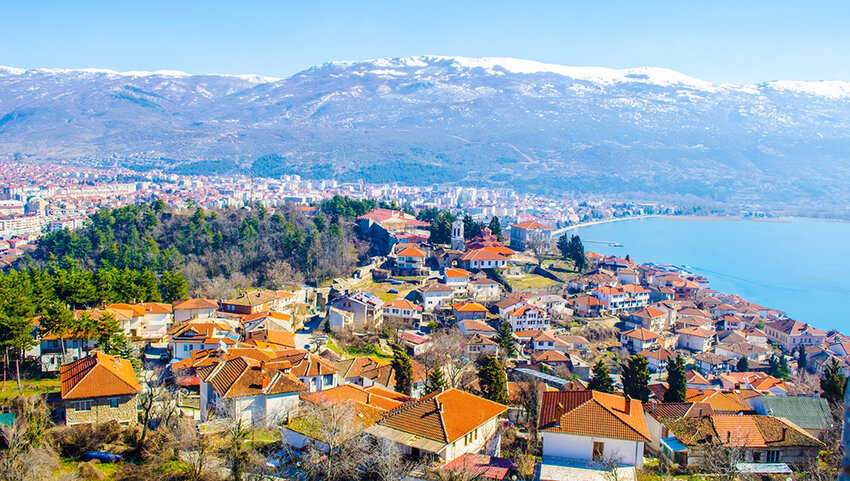
Ohrid began as a Greek colony around the 2nd century BCE, which explains in part why the city’s regional cuisine incorporates elements of Greek cooking as well as recipes from nearby Turkey. But this city, deemed by some as the “Jerusalem of the Balkans,” is better known for purportedly once having 365 churches within the city limits, one for every day of the year.
Though many churches are no longer standing, Ohrid remains home to some incredible religious institutions dating back to the 10th century CE, such as St. Sophia’s and St. Clement’s. These churches continue to showcase some of the most stunning religious frescoes that the art world has ever seen. One particularly special church is the Church of St. John at Kaneo, though less for its religious solemnity and more for its incredible views. This church sits atop the cliffs overlooking Kaneo Beach, offering the perfect vantage point to gaze out upon the crystal clear waters of Lake Ohrid.
Ljubljana, Slovenia
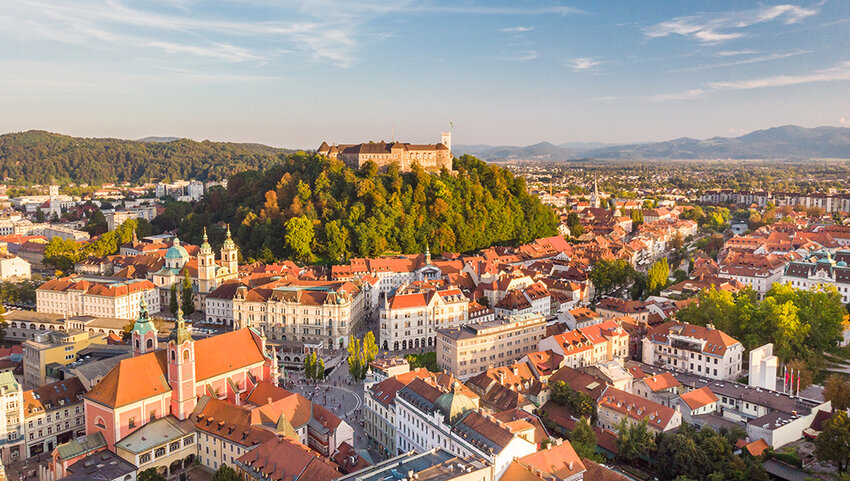
Despite being the capital city of Slovenia, Ljubljana is little known outside of the region, and is one of the smallest capital cities in Europe. But with 50,000 university students within the city limits, the town has developed into a popular destination for youthful Europeans looking to escape for a weekend. Ljubljana is paradisiacal for bikers and walkers alike, thanks to certain restrictions on car traffic in the city center, as well as those who choose to take a paddle board down the river that runs through town.
One of the proudest symbols representing the city is that of the Ljubljana Dragon. In fact, the city as a whole is nicknamed the “City of Dragons,” as it was said to be the home of a dragon in ancient times. Per regional lore, Dragons have been treated as protectors of the city in the centuries since. Today, this legacy can be celebrated during citywide events such as the Dragon Carnival, an annual winter parade featuring dragon floats passing through the city streets.
Tartu, Estonia
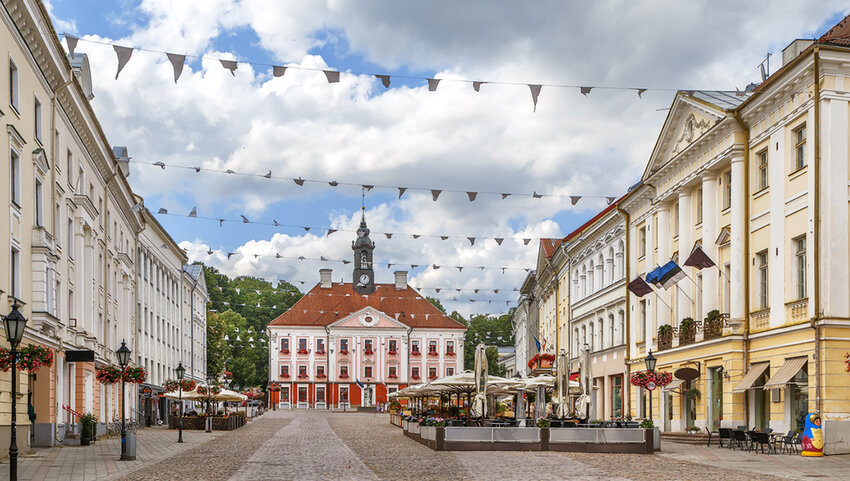
Tartu is a small town in eastern Estonia situated 100 miles southeast of the capital city of Tallinn. But while Tartu may not be as widely known, the city has played a key role in European education for nearly four centuries, as the city’s namesake university opened in 1632 and is among the oldest extant universities found anywhere in Europe. Beyond this educational heritage, Tartu is considered an epicenter of Baltic culture, which is exemplified by historic walks through the Old Town as well as lively evenings of experiencing the city’s vibrant nightlife.
Tartu is also home to the AHHAA Science Centre — the largest science museum anywhere in the Baltic states — as well as the Botanical Gardens, which are beautiful and free to access. Children and adults alike can also explore Tartu Toy Museum, an institution that chronicles the history of Estonian children’s toys. Lastly, Tartu is the site of the Estonian National Museum. This massive institution — which was built atop a location that once served as a runway for the Soviet military — encompasses over 364,000 square feet of space and features historic Estonian artifacts from the world of art, fashion, politics, and more.

